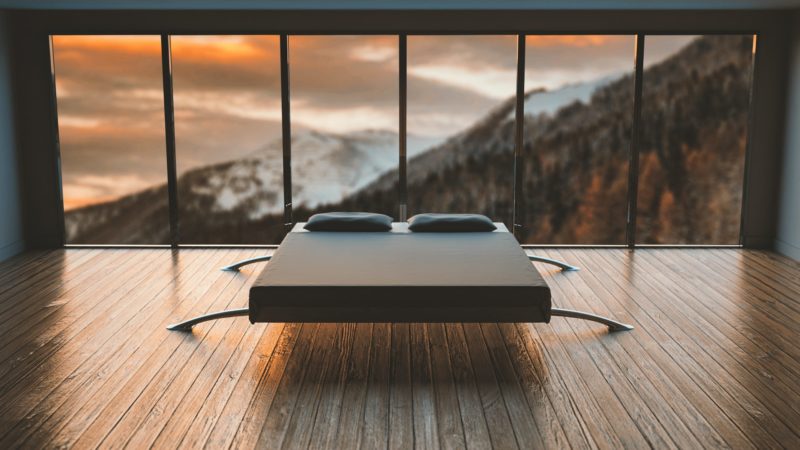Bedroom Tips to Avoid Shoulder Pain From Sleeping On Your Side
Sleep is one of the most important factors for a happy and healthy life. After all, being healthy, active, and energetic all allow you to travel, improve your home, spend time with your family, and generally live a good, harmonious life. Unfortunately, shoulder pain is a common cause of lost sleep. And when you lose sleep, it starts to affect your life in more ways than one. This is why we want to share with you bedroom tips to avoid shoulder pain when sleeping on your side.
The Importance of Sleep
The more we find out about sleep, the more we learn how important it really is. Gone are the days of sleeping 4 hours and working for 20 (for some of us anyway). With all we know about sleep, it’s a wonder anyone sleeps less than 7 hours a night. Here are some of the major benefits of adequate sleep:
- Increases energy, focus, and productivity.
- Can help athletic performance.
- Can reduce the risk of heart disease.
- Boosts immune function.
- Can positively affect your emotions and relationships.

On the other hand, poor sleep has been linked to:
- Higher bodyweight.
- Increased risk of type 2 diabetes.
- Increased instances of depression.
- May promote chronic inflammation.
So if your sleep is being interrupted or negatively affected by shoulder pain, you could be losing more than just sleep. It could be affecting health.
Common Causes of Shoulder Pain
Side sleeping rarely causes shoulder pain, but it can definitely make an existing injury or issue worse. If you do have a serious injury or issue, it’s a good idea to see a physician or chiropractor for guidance on healing so you can get back to sleeping soundly.
Tips to Avoid Shoulder Pain When Sleeping on Your Side
Change Positions
This seems like the most obvious solution, but it’s deceptively simple. The fact is that, for many people, it’s very difficult to fall asleep in any position other than the one they like. Side-sleepers find it hard to fall asleep on their back or stomach. The same can be said for many back and stomach sleepers.
Plus, we often don’t have control of the positions we choose after we fall asleep. You may start off on your back, but wind up sleeping on your shoulder. Whether or not you wake up because of the pain in your shoulder is a different story. The fact is that it’s hard to suddenly change your preferred sleeping position.
Use a Pillow
One way to keep yourself from rolling on your side is to place a pillow next to you as you sleep on your back. Even that little bit of resistance can be enough to keep your sleeping self from ending up on your shoulder.
Stay Active
One of the best ways to fall asleep and stay asleep is through regular exercise. While you may want to avoid shoulder-centric movements, you can still get some pulse-raising activity in. Not only does regular exercise help you sleep better, it may help you heal faster. The last thing you want to do when you have trouble sleeping is sit around all day without getting any exercise. Even without pain, you may be staring at the ceiling until the wee hours of the morning.
Try an Over-The-Counter Non-Steroidal Pain Pill
While you probably shouldn’t do this every night (unless your doctor tells you otherwise), it’s a good occasional solution. Things like Advil or Ibuprofen can help relieve your pain so you can get to sleep.
Stick to Good Sleep Habits
Again, this tip is good for those who don’t have shoulder pain. Good sleeping habits can help you fall into a natural sleep cycle, which can work wonders for your body and your life. Here are a few:
- Make sure you don’t have any screens glowing in your face or around you when you’re trying to sleep.
- Only ingest caffeine in the morning, avoid it in the evenings.
- Stick to a set sleep schedule, even on the weekends.
- Allow yourself a few minutes to wind down with some deep breathing or other calming tactics.
Choose the Right Mattress
If you just can’t see yourself sleeping in any other position and your shoulder or arm pain persists, you may want to get a different mattress. One of the problems with sleeping on your side is that your sleeping shoulder and hip take most of your bodyweight. This causes your spine to move out of alignment, which can cause back problems as you get older. Of course, it also puts undue pressure on your shoulder joint.
Luckily, choosing the right mattress can help. All mattress companies use the same rating system for their products. The scale is from 1 to 10, with 10 being the firmest and 1 being the softest. Side sleepers usually do well with a softer mattress because it allows their shoulders and hips to get a little help from the rest of the body, relieving some of that pressure. The right mattress can also help the spine stay aligned, reducing the chances of future back problems.
Generally speaking, side sleepers benefit from a mattress rating around 5, but this isn’t a hard and fast rule. It’s a good idea to do a little research and even get a chiropractor approved bed. Which brings us to the last and final tip.
See A Chiropractor
Your best bet for getting some good sleep with shoulder pain may be a doctor of chiropractic. Instead of putting up with the pain, you may be able to have it drastically reduced or even healed in a few sessions. Many people also find that chiropractors also help them relieve stress, improve posture, enhance balance, and eliminate back issues.
Conclusion
Health and wellness are an essential part of living a full and fulfilling life. It can be easy to overlook a thing like adequate sleep until you have an issue that prevents it. Shoulder issues are fairly common for side sleepers, but they don’t have to get in the way of living your best life.
Author Bio
Dr. Brent Wells founded Anchorage’s Better Health Chiropractic & Physical Rehab in 1998. He is currently leading 10,000 Alaskans to more active and pain-free lifestyles without drugs or invasive surgeries. His team consists of progressive and highly innovative chiropractors, massage therapists, and physical therapists. Dr. Wells continues to further his education with ongoing studies in spine conditions, neurology, physical rehabilitation, biomechanics, occupational ergonomics, whiplash, and brain injury traumatology. He is also a member of the American Chiropractic Association and the American Academy of Spine Physicians.














